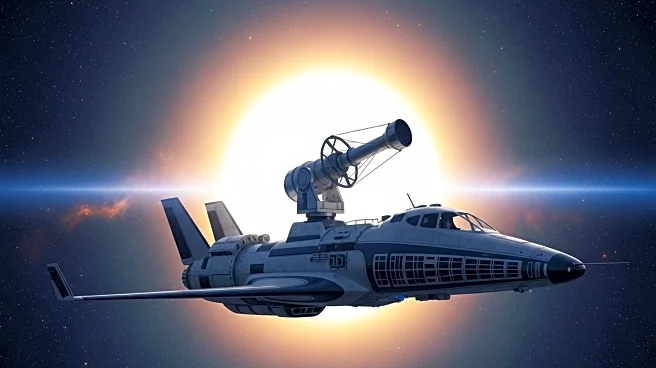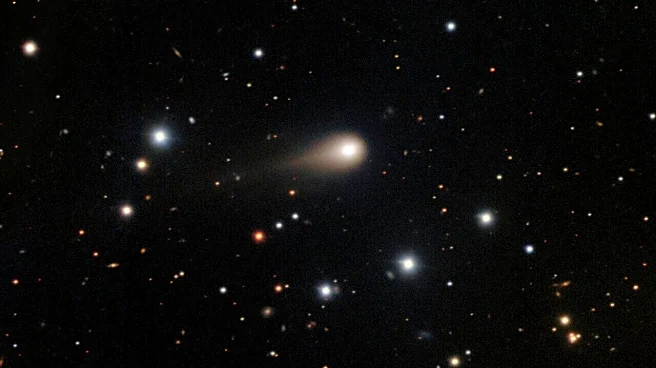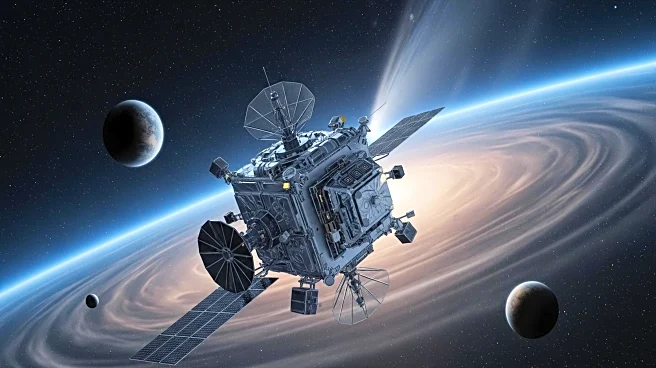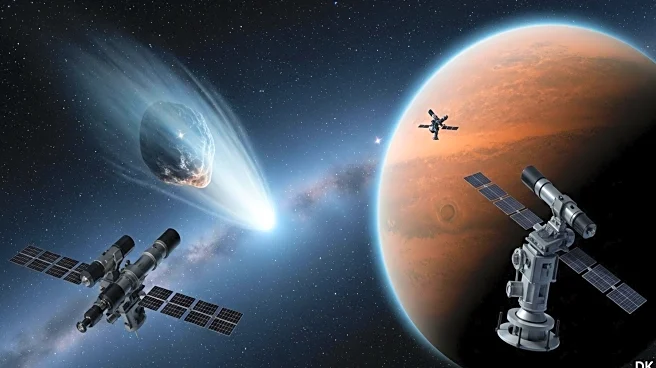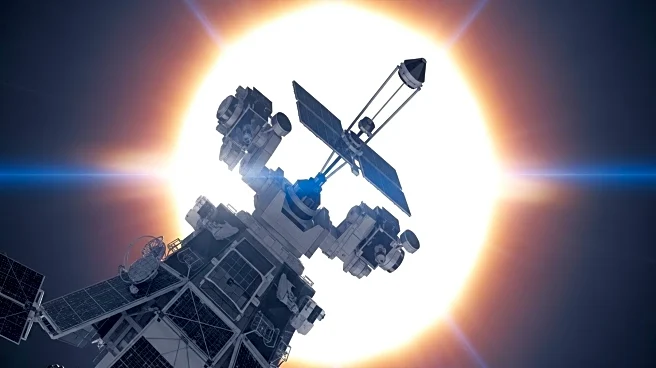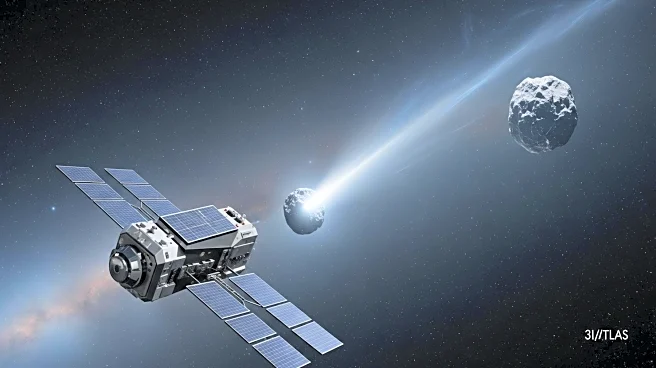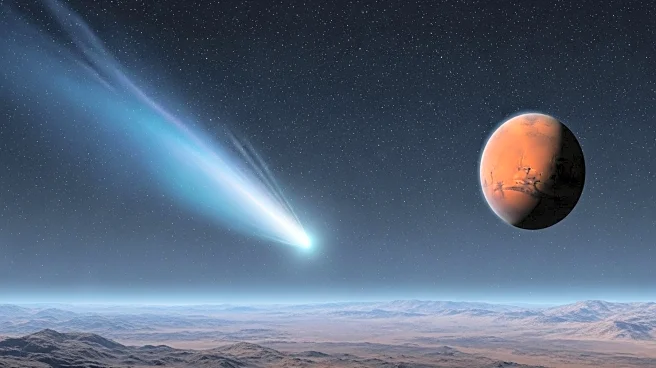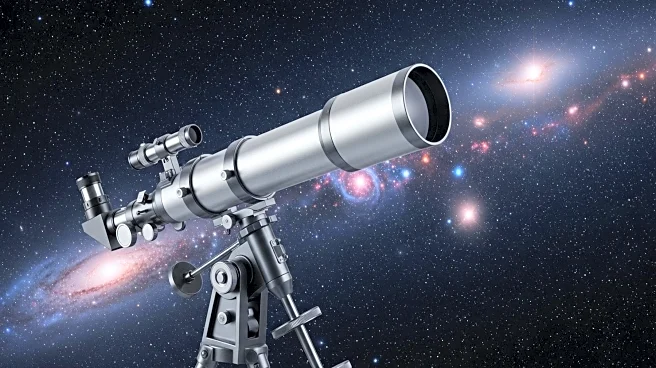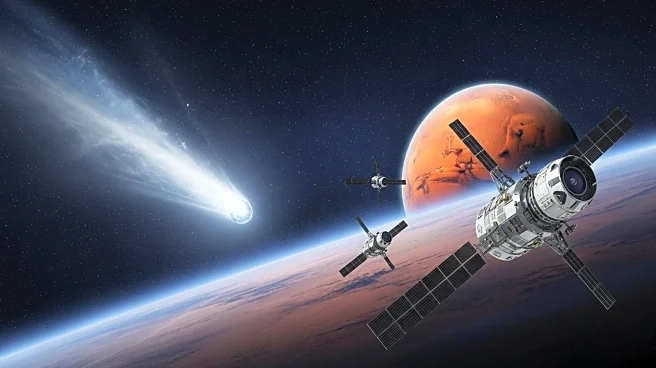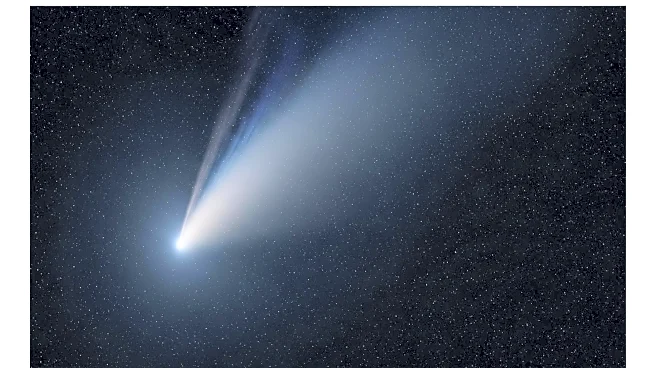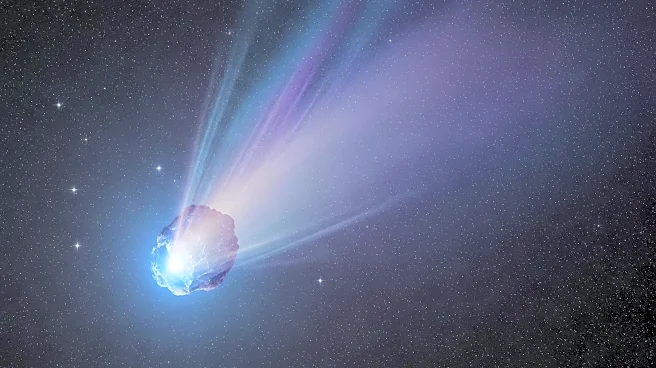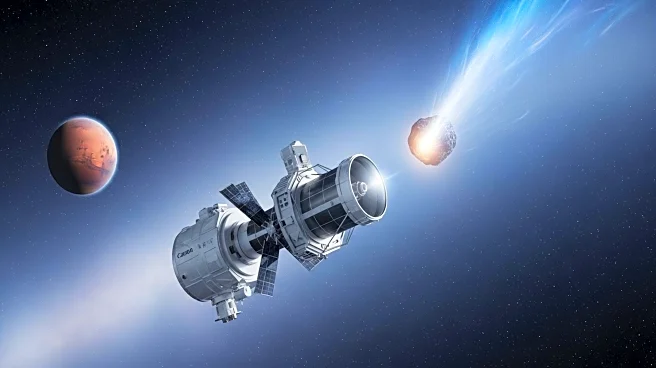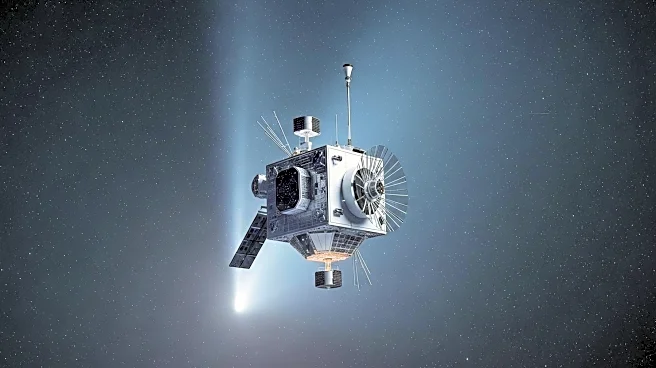What is the story about?
What's Happening?
The interstellar comet 3I/ATLAS is currently being observed by various spacecraft as it travels through the Solar System. This comet, originating from outside our solar system, is on a trajectory that will soon take it out of view from Earth-based telescopes as it moves to the opposite side of the Sun. This period of invisibility is expected to last until early December 2025. During this time, several space missions, including NASA's Mars Reconnaissance Orbiter and the European Space Agency's ExoMars Trace Gas Orbiter, are set to capture data on the comet. These observations aim to provide insights into the comet's composition and activity, particularly as it reaches its closest approach to the Sun, known as perihelion.
Why It's Important?
The study of interstellar comet 3I/ATLAS presents a unique opportunity for scientists to gather data on a celestial object from outside our solar system. Understanding its composition and behavior could offer clues about the building blocks of planetary systems beyond our own. This research could potentially reveal whether the materials that form comets in our solar system are common throughout the galaxy or if they contain exotic elements from other star systems. The findings could have significant implications for our understanding of the formation and evolution of planetary systems, contributing to the broader field of astrophysics.
What's Next?
As the comet approaches perihelion, the heat from the Sun is expected to cause its icy components to vaporize, providing a prime opportunity for observation. Instruments on ESA's Jupiter Icy Moons Explorer (JUICE) will be particularly focused on the comet during this period, from November 2 to November 25, 2025. These observations are crucial as they coincide with the time when Earth-based observations are not possible. The data collected will help scientists determine the comet's chemical makeup and compare it to comets formed within our solar system, potentially offering new insights into the diversity of planetary systems.
Beyond the Headlines
The observation of 3I/ATLAS also raises intriguing questions about the nature of interstellar objects. Some scientists speculate whether such objects could be natural or possibly technological in origin, although this remains a topic of debate. The study of 3I/ATLAS could contribute to this discussion by providing concrete data on its physical and chemical properties. Additionally, the comet's journey through our solar system offers a rare chance to study an object that may have originated from the 'thick disk' of our galaxy, potentially offering a glimpse into the conditions of the early Milky Way.
AI Generated Content
Do you find this article useful?
